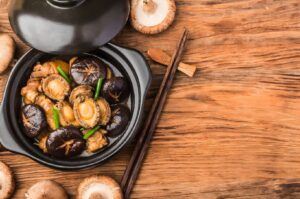
Authentic Italian Cuisine: Simplicity, Seasonality, Craft
The essence of Italian cuisine lies not in complexity, but in profound simplicity achieved through exceptional ingredients and centuries of culinary wisdom. True Italian food celebrates the philosophy of using few stellar ingredients, allowing each element to shine without unnecessary embellishment. This restraint creates dishes where every component serves a purpose, from the first bite to the last.
Regionality forms the backbone of authentic Italian cuisine, with each province developing distinct flavours based on local ingredients and climate. This deep connection to place means that what you eat in Sicily differs dramatically from the offerings in Lombardy, yet both remain unmistakably Italian. The craft lies in understanding how geography, seasons, and tradition converge to create iconic dishes that tell the story of their origins.
Italian Food Beyond Pizza & Pasta
While pizza and pasta have become global ambassadors for Italian food, the true breadth of this cuisine extends far beyond these familiar favourites. Traditional Italian dining follows a structured progression: antipasti (appetisers), primi (first courses including pasta and risotto), secondi (main courses featuring meat or seafood), contorni (fresh vegetables), and dolci (desserts).
This “less is more” approach creates meals that build flavours gradually, allowing diners to appreciate subtle differences between courses. Each stage serves a purpose, from awakening the palate with antipasti to providing satisfying closure with indulgent desserts. Understanding this structure reveals why Italians rarely pile everything onto one plate—the progression creates a more thoughtful dining experience.
Curious how regional variety plays out in another major cuisine here? Explore our deep dive on the varieties of Chinese cuisine in Singapore.
The Meal Structure: From Antipasti to Dolci
The meal starts with the Antipasti typically served as the meal’s opening act might include cured prosciutto, fresh mozzarella, marinated vegetables, or regional specialities that preview the flavours to come. These small plates prepare the palate whilst encouraging conversation and relaxation.
Primi courses showcase Italy’s mastery of grains and pasta varieties, from silky risotto to handmade fresh pasta with various sauces. Secondi courses feature proteins cooked simply to highlight their natural qualities—perhaps baked fish with lemon juice or braised beef with herbs. Contorni provides essential balance through seasonal vegetables dressed with olive oil and garlic. Desserts conclude the meal on a sweet note, from creamy tiramisu to refreshing gelato, with presentations that vary depending on regional traditions.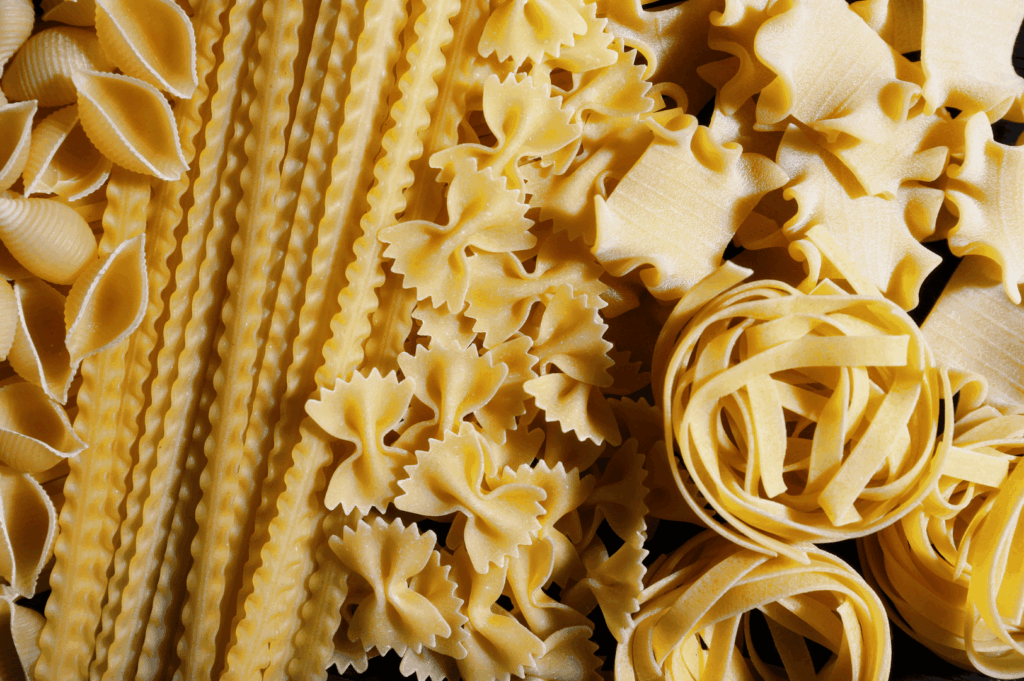
Pasta Logic: Shapes, Pairings, and Various Sauces
Understanding pasta requires appreciating how shapes and various sauces must harmonise. Each shape serves a functional purpose—ridged rigatoni captures chunky meat sauce, while delicate angel hair pairs beautifully with light tomato sauce. The relationship between texture and sauce determines the dish’s success.
Meat Sauce and Tomato Sauce — When Each Shines
Meat sauce demands robust pasta shapes that can support its weight and richness. Think pappardelle with wild boar ragu or tagliatelle al ragù alla bolognese. These sauces develop complexity through slow cooking, building layers of flavour that complement substantial pasta varieties.Tomato sauce, on the other hand, shines with medium-weight shapes that allow the sauce to coat evenly without overwhelming the pasta’s texture. The primary ingredient—whether San Marzano tomatoes or fresh basil—should remain the star, supported rather than masked by the pasta choice.Pesto Sauce, Stuffed Pasta & Fresh Pasta
Pesto sauce represents Ligurian genius: fresh basil, pine nuts, extra virgin olive oil, and parmesan cheese creating aromatic perfection. This vibrant sauce pairs magnificently with linguine or trenette, allowing the olive oil to coat the pasta whilst the basil perfumes each bite.Stuffed pasta like tortellini and ravioli requires different treatment entirely. These parcels contain their own flavours, needing only simple accompaniments—perhaps melted butter with sage or light broth that complements rather than competes with the filling. Fresh pasta offers superior texture and flavour absorption compared to dried varieties, making it worth seeking out for special occasions.Fresh vs Dried Pasta: Wheat Flour, Pasta Varieties, Many Variations
Wheat flour quality determines pasta’s final character, with different regions preferring specific flour types based on local grain varieties. Fresh pasta uses softer flour and eggs, creating silky textures perfect for delicate sauces. Dried pasta, made from harder wheat flour and water, provides firmer textures that hold up to robust preparations.The many variations across Italy reflect local preferences and available ingredients. Northern Italy favours egg-enriched fresh pasta, while southern regions prefer dried varieties that complement their bold tomato sauce traditions. Cooking times vary depending on thickness and preparation method, with fresh pasta requiring only minutes while dried versions need longer cooking.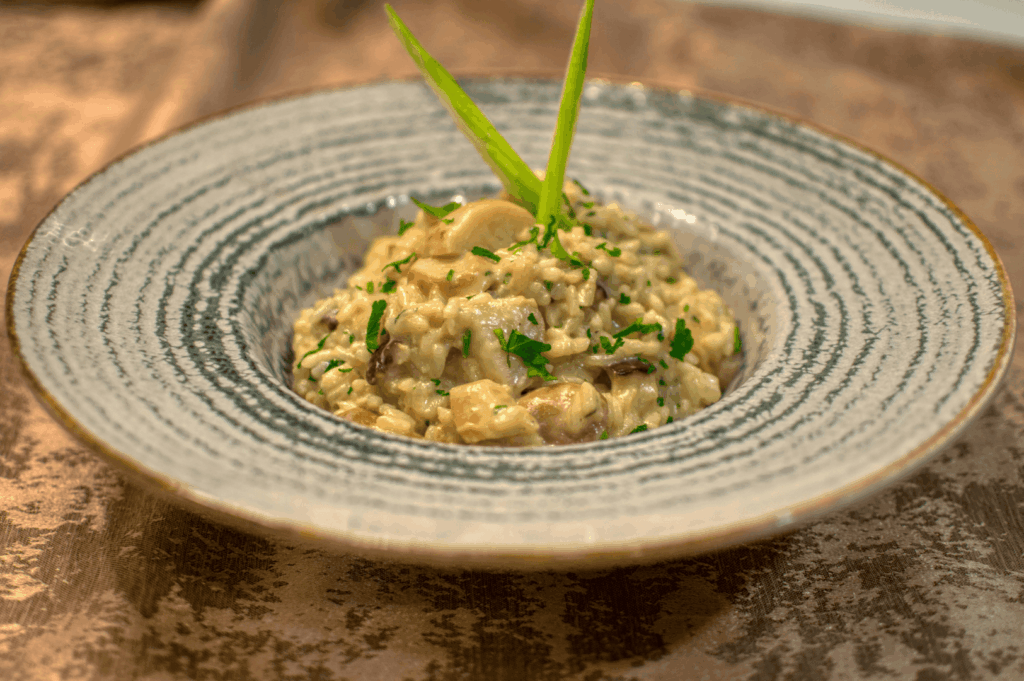
Risotto & Polenta: Northern Italy Comforts
Northern Italy excels in rice and corn preparations that showcase the region’s agricultural abundance. Perfect risotto requires patience, proper rice varieties (Arborio, Carnaroli, or Vialone Nano), and gradual addition of warm stock whilst stirring constantly. The final texture should be all’onda—flowing like lava when shaken. Italian chefs describe this as risotto all’onda, achieved by gradual stock addition and finishing (mantecatura) off the heat.
Polenta, traditional to northen Italy, transforms humble cornmeal into creamy comfort through slow cooking and constant stirring. Whether served soft as a side dish or allowed to set and grilled, it provides earthy satisfaction. Classic northern Italy pairings include polenta with wild mushrooms or melted butter and parmesan cheese. The finishing touch of butter creates luxurious richness that elevates these humble ingredients to sophistication.
Vegetables & Contorni: Fresh Vegetables, Olive Oil & Herbs
Fresh vegetables in Italian cuisine receive treatment that enhances rather than disguises their natural character. Seasonal produce drives menu choices, with spring bringing tender artichokes, summer offering ripe tomatoes, autumn providing hearty squashes, and winter delivering robust greens.
Extra virgin olive oil serves as both cooking medium and finishing touch, its fruity notes complementing vegetables without overwhelming them. Fresh herbs like basil, oregano, and rosemary add aromatic complexity, while garlic provides savoury depth. Simple preparations—potatoes roasted with rosemary, cannellini beans dressed with olive oil and sage—demonstrate how restraint creates memorable flavours that balance alongside main courses.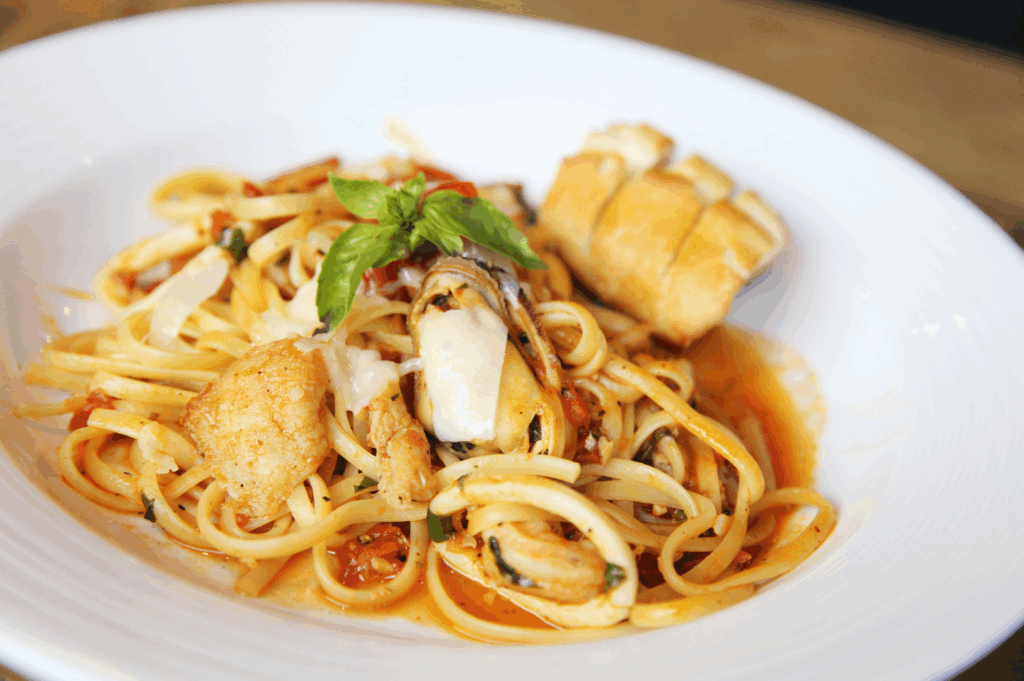
Seafood & Coastal Cooking: Southern Italy Brightness
Southern Italy’s coastal cuisine celebrates the Mediterranean’s bounty through bright, clean flavours that highlight exceptional seafood. Fresh lemon juice provides acidity that brightens grilled fish, while capers add briny punctuation to baked preparations. Ripe tomatoes form the foundation of countless seafood dishes, from simple spaghetti alle vongole to elaborate fish stews.
Cooking methods remain purposefully simple—grilling, roasting, and baked preparations that preserve the seafood’s natural sweetness. The warm southern italy climate produces intensely flavoured tomatoes, lemons, and olive oil that require minimal intervention to create extraordinary dishes. These coastal flavours represent Italian cuisine at its most elemental and satisfying.
For a Southeast Asian contrast rooted in coastal flavors and spice, see our guide to Malay cuisines in Singapore.
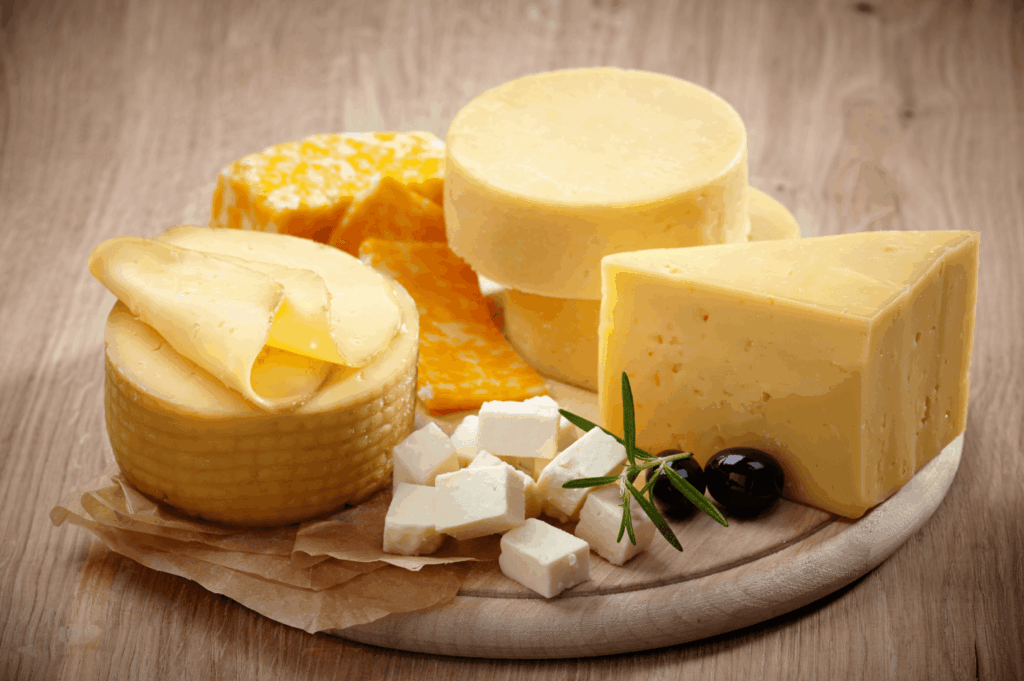
Mozzarella Cheese & Parmesan Cheese: Dairy Icons of Italy
Mozzarella cheese represents Italian cheesemaking at its most pure, traditionally crafted from buffalo milk that provides richer flavour and creamier texture than cow’s milk versions. Fresh mozzarella’s milk character shines in simple preparations—paired with basil and tomatoes in caprese salad or melted onto pizza where its creamy texture creates perfect contrast.
For the traditional buffalo-milk version, look for Mozzarella di Bufala Campana DOP, protected and overseen by its official consortium.Parmesan cheese (Parmigiano Reggiano) offers completely different character through extended aging that develops complex, nutty flavours and granular texture. This king of Italian cheese enhances countless dishes through careful grating, from finishing risotto to creating pesto. Other regional cheese varieties contribute unique characteristics, but these two remain the most globally recognised and typically served across Italian dishes.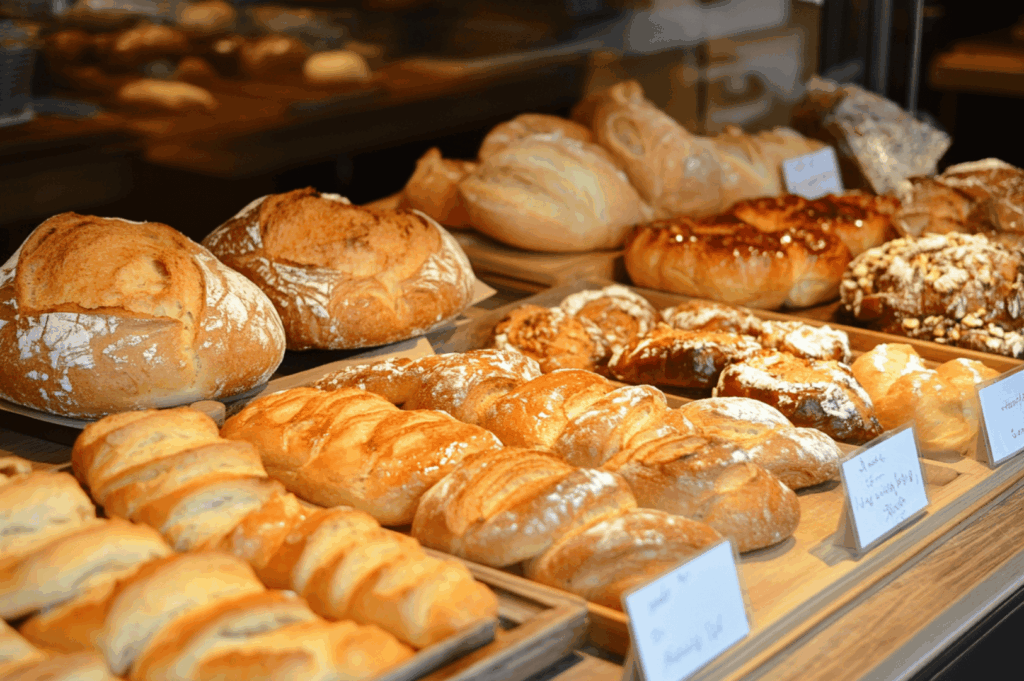
Bread, Doughs & Street Classics
Italian bread and dough traditions vary dramatically by region, from Tuscan saltless bread to Pugliese focaccia loaded with olive oil and herbs. Pizza represents perhaps the most famous dough creation, with Neapolitan versions featuring simple toppings that showcase the dough’s character. Focaccia provides another canvas for creativity, topped with tomatoes, garlic, or fresh herbs.
Street classics like panzerotti (fried dough turnovers from Apulia, similar to small calzoni) demonstrate how great food can emerge from humble beginnings. These casual dishes prove that exceptional Italian food doesn’t require elaborate preparation—just quality ingredients and time-tested techniques that create satisfying meals quickly and affordably.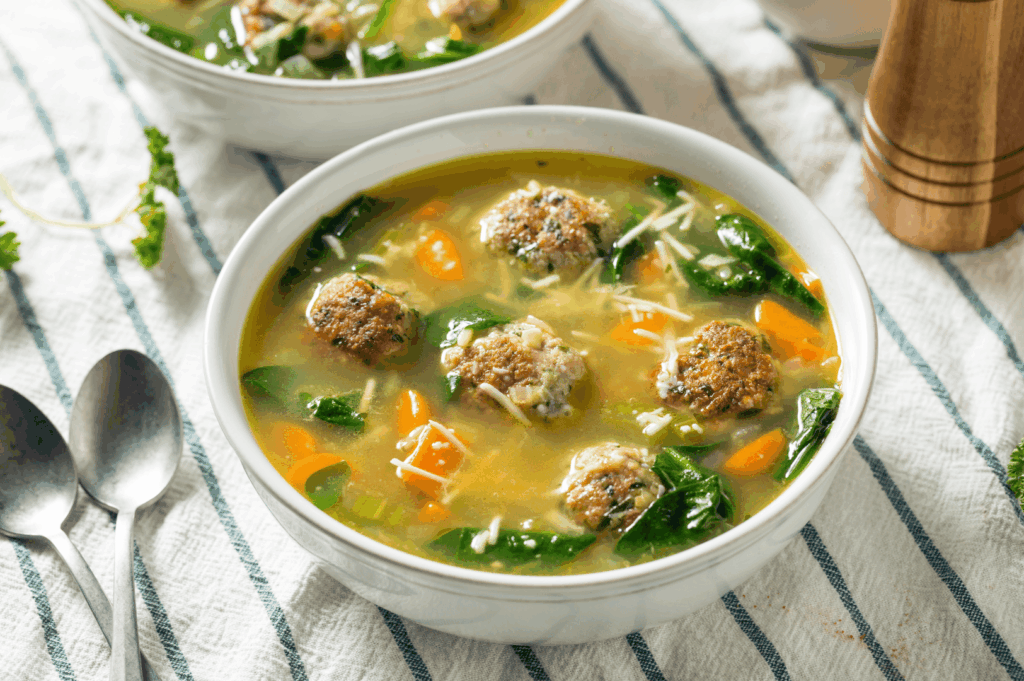
Soups & Comfort Bowls: Cannellini Beans, Potatoes & Vegetables
Italian soups transform simple ingredients into nourishing comfort through patient cooking and thoughtful seasoning. Minestrone showcases seasonal vegetables in aromatic broth, while Ribollita (literally “reboiled”) demonstrates Italian resourcefulness by transforming yesterday’s leftover bread and vegetables into today’s hearty meal.
Pasta e fagioli combines pasta with cannellini beans in a traditional dish that varies by region but always delivers satisfying sustenance. These soups anchor family meals through their ability to stretch ingredients whilst delivering complete nutrition. Potatoes, vegetables, and legumes create filling bases that welcome whatever seasonal produce is available, making these recipes adaptable to local ingredients and family preferences.
Desserts & the Sweet Finish (Indulgent Desserts)
Italian desserts range from simple to spectacular, always emphasising quality ingredients over complex techniques. Tiramisu layers coffee-soaked ladyfingers with mascarpone cream, creating textural contrast through food styling that remains elegant yet approachable. Panna cotta showcases cream’s silky potential through minimal cooking and maximum flavour.
Gelato represents Italian innovation in frozen desserts, churned more slowly than ice cream to create denser, more intensely flavoured results. Regional variations include Sicily’s cannoli with ricotta filling and southern Italy’s granita that transforms fresh fruit into refreshing treats. These indulgent desserts provide perfect endings that cleanse the palate whilst satisfying sweet cravings.
Best Italian Restaurants in Singapore (Beyond Pizza & Pasta)
Singapore offers everything from affordable counters to special-occasion dining rooms that honour authentic Italian cuisine through careful attention to ingredients and technique. Each Italian restaurant brings unique perspectives whilst maintaining respect for traditional methods.
Tipo Pasta Bar (Affordable) specialises in handmade pasta with halal-friendly options and build-your-own sauce combinations. Their infused doughs and focus on pasta, sauce, and cheese combinations make this casual Italian restaurant perfect for weeknight dining without sacrificing quality.Cicheti (Mid-range) operates as a cozy trattoria featuring wood-fired cooking and house-made pasta. Their produce-first approach to Italian dishes and carefully crafted main courses demonstrate how mid-range establishments can deliver authentic experiences through attention to ingredients and technique.Garibaldi (Expensive) showcases refined regional cooking spanning from Emilia Romagna to coastal regions. Their signatures include exceptional seafood risotto and carefully prepared meat secondi that demonstrate italian cuisine’s sophisticated potential.Buona Terra (MICHELIN) represents contemporary Italian dining through seasonal produce sourcing and elegant plating that creates benchmark experiences beyond pizza and pasta. Their approach proves how Italian cuisine adapts to modern expectations whilst maintaining traditional foundations.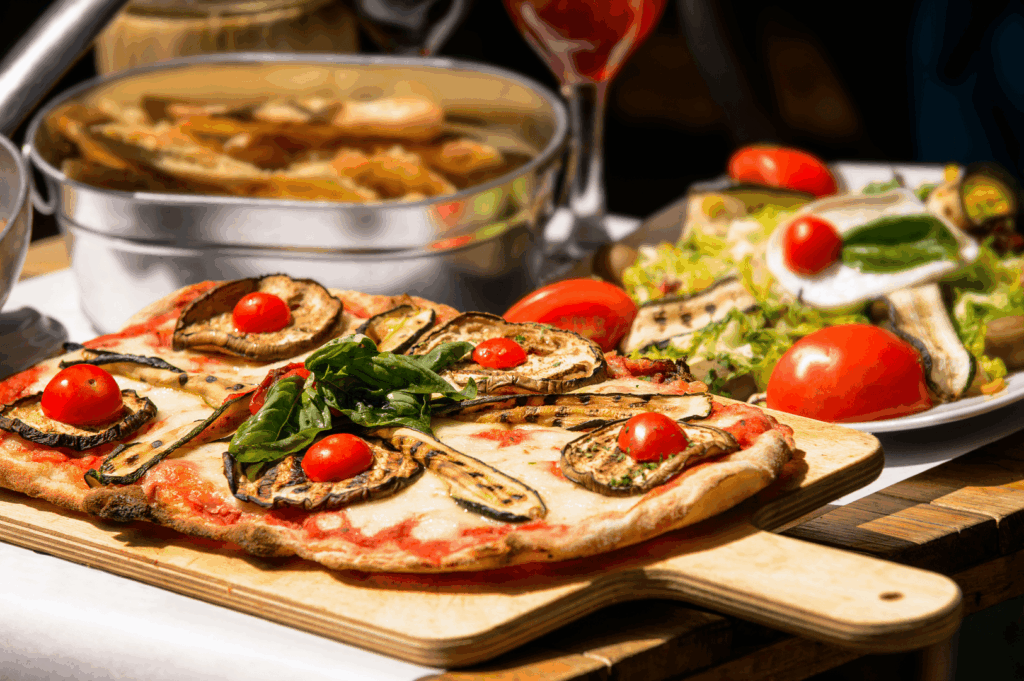
Italian Food: A Deep Connection to Place, Craft, and Great Food
Italian cuisine’s enduring appeal stems from its deep connection to place, unwavering commitment to craft, and respect for exceptional ingredients that create great food through simplicity rather than complexity. Italy’s long history of culinary refinement produces techniques and traditions that remain relevant because they honour natural flavours and seasonal rhythms.
The table’s charm emerges from clarity of purpose, seasonal awareness, and masterful craft that transforms simple ingredients into memorable experiences. Whether enjoying a simple bowl of pasta with tomato sauce or exploring regional specialities that showcase local traditions, Italian cuisine rewards those who appreciate how patience, quality, and tradition converge to create extraordinary dishes from humble beginnings. This understanding transforms dining from mere consumption into cultural appreciation—exactly what makes Italian food timelessly appealing.